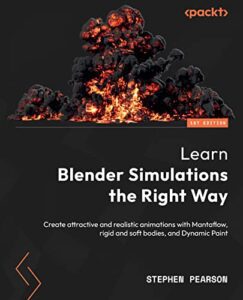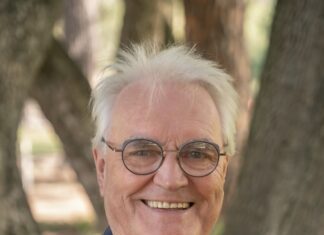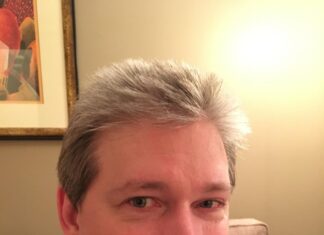Stephen Pearson is the author of Learn Blender Simulations the Right Way; we got the chance to sit down and find out more about his experience of writing with Packt.
Q: What are your specialist tech areas?
Stephen: Blender, Photoshop, Illustrator, and Premier Pro
Q: How did you become an author for Packt? Tell us about your journey. What was your motivation for writing this book?
Stephen: Packt reached out to me asking if I’d like to write a book on Blender simulations as I have created multiple courses on the topic. I had never written anything longer than a couple of pages for an essay or video script so the thought of writing an entire book was intimidating. The team I was working with helped me through the entire process and made everything much easier. The reason why I wanted to write this book in the first place was to give the Blender community a product that could teach them about every simulation in Blender in one place. So instead of researching many different websites and videos, they could learn everything in one place.
Q: What kind of research did you do, and how long did you spend researching before beginning the book?
Stephen: A lot of the research I did was from the courses I have created. I would re-watch the videos when I was writing about a certain topic and this helped me to give accurate information. Another huge resource was the official Blender manual. I would refer to the manual constantly while writing.
Q: Did you face any challenges during the writing process? How did you overcome them?
Stephen: One of the biggest challenges I faced while writing was organizing all the information in a concise and easy way to understand. A lot of the time I would write about a certain topic and then I realized I needed to mention another topic in order for this one to make sense. As I’m writing about this new topic I need to mention another topic again. The thing that helped was to go back to the drawing board for that chapter and really knuckle down on the outline. I needed to think about each subject that I wanted to write about and then lay it all out. Also taking a break and returning with a fresh mind is always a good idea!
Q: What’s your take on the technologies discussed in the book? Where do you see these technologies heading in the future?
Stephen: Simulations are used quite a bit in movies, games, and VFX. Not only that but they can also be used to create different models, scenes, and animations inside Blender. I think the topics discussed in the book are important to learn, especially if you are wanting to get into Blender.
Q: Why should readers choose this book over others already on the market? How would you differentiate your book from its competition?
Stephen: As far I know there are no books specifically on Blender Simulations. I do know some books cover simulations a little bit but definitely not to the depth that is in this book. My book is for those wanting to learn Blender Simulations in detail and get a really good understanding of each simulation.
Q: What are the key takeaways you want readers to come away with from the book?
Stephen: By the end of the book I want the reader to have a good understanding of all 5 simulations in Blender and how to use them efficiently, without guessing what a setting of value does.
Q. What advice would you give to readers learning tech? Do you have any top tips?
Stephen: My advice would be to experiment as you are learning and create cool and interesting things. This really helps all the information sink in a fun way.
Q. Do you have a blog that readers can follow?
Stephen: I don’t have a blog, but I have a Youtube channel called BlenderMadeEasy.
Q: Can you share any blogs, websites, and forums to help readers gain a holistic view of the tech they are learning? What are the key takeaways you want readers to come away with from the book?
Stephen: Youtube tutorials are a great way to learn even more. Websites like Skillshare and Udemy offer courses on Blender and can be fantastic resources. Also, CG Boost and CG Cookie have some of the best educational courses on Blender on their websites.
Q. How would you describe your author’s journey with Packt? Would you recommend Packt to aspiring authors?
Stephen: Working with Packt has been great. The team helping me was fantastic and they were always there whenever I had a problem or question. Without the team, I don’t know if the book would have turned out the way it did. I definitely recommend working with Packt if you are wanting to write a tech book and don’t know where to start!
Q. Do you belong to any tech community groups?
Stephen: If you can call the Blender community a tech group then sure.
Q. What are your favorite tech journals? How do you keep yourself up to date on tech?
Stephen: I don’t really read any journals, but I watch many tutorials on Blender. I make sure to always read the patch notes and updates whenever there is a new version of Blender that comes out. This helps me keep up to date with the latest technologies.
Q. How did you organize, plan, and prioritize your work and write the book?
Stephen: What helped me was to create a schedule for the whole week. I would work on the book for 2 – 3 hours then after that, I would take a break and focus on a different project. I would do this throughout the week to keep everything organized.
Q. What is that one writing tip that you found most crucial and would like to share with aspiring authors?
Stephen: Definitely having a strong detailed outline before I even started writing is one thing I wish I had done. This would have made the process a bit smoother.
Q. Would you like to share your social handles? If so, please share.
Stephen: BlenderMadeEasy on Youtube, Twitter, Facebook, and Instagram. Stephen Pearson on Udemy and Skillshare.
You can find Stephen’s book on Amazon by following this link: Please click here









